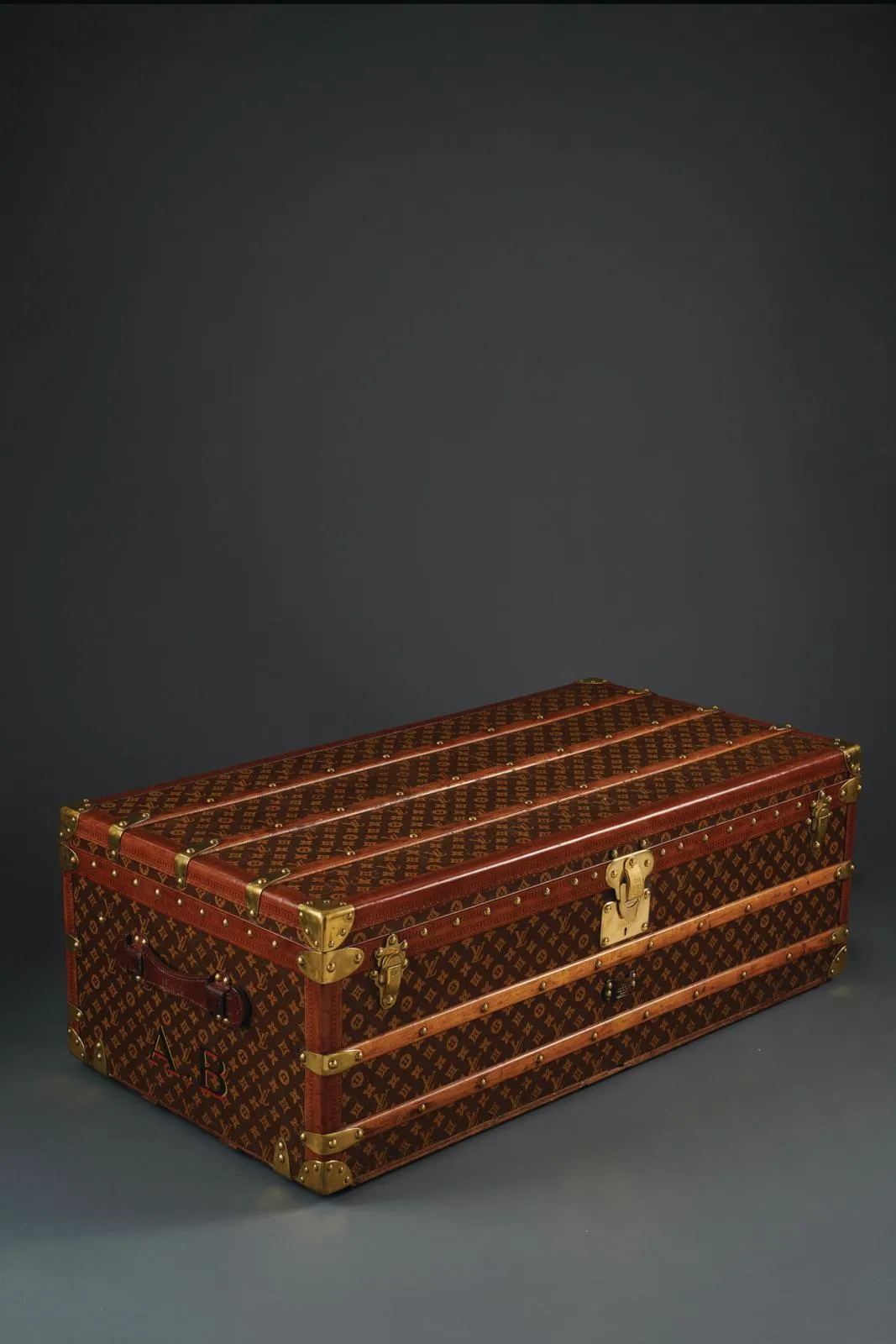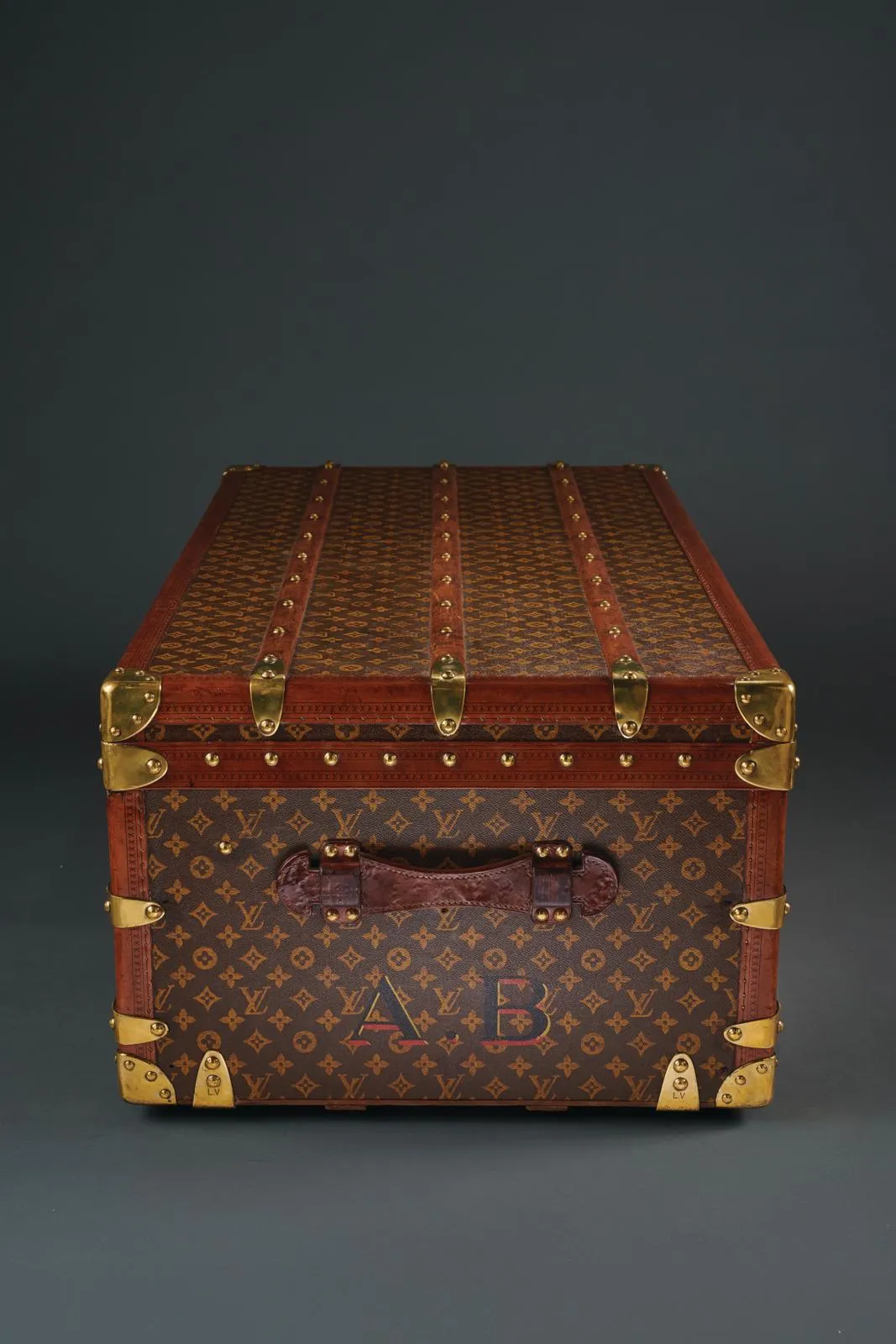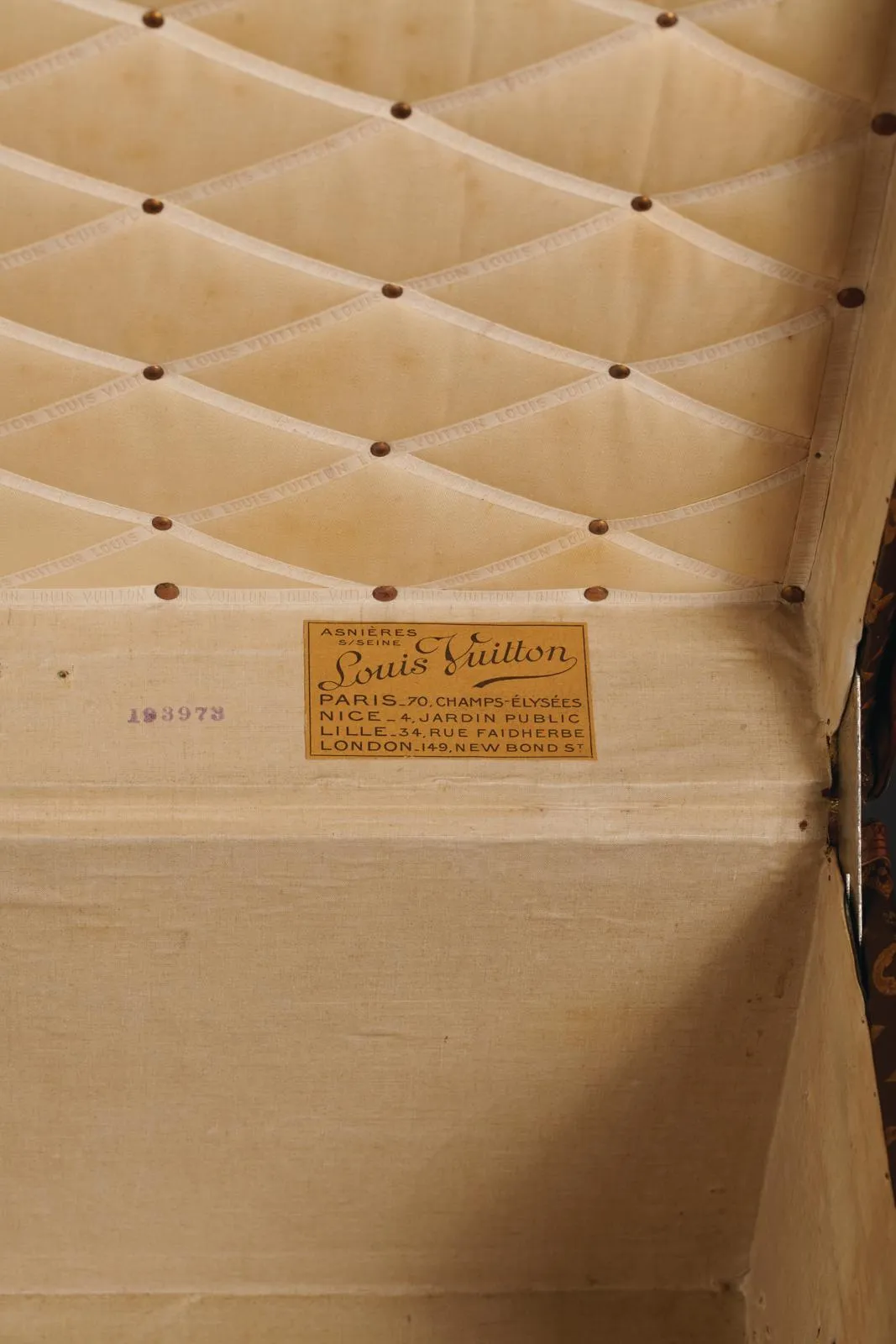First adorned with simple grey canvas, and later stamped with the iconic LV monogram, Louis Vuitton’s 1858 stackable trunk revolutionised luxury luggage. Much like mini wardrobes, Vuitton’s trunks were crammed with ingenious compartments for storing clothes and accessories and became the ultimate travel companion for affluent adventurers...
Who was Louis Vuitton?
The founder of one of the world’s most prestigious luxury brands came from humble stock. Born in 1821 in Anchay, a small hamlet in the French region of Jura, the story goes that Louis left home aged just 13 and set off for Paris on foot – a 292-mile, two-year journey – doing odd jobs en route. Once there, he became an apprentice trunk-maker – considered a highly respected craft at the time – and his reputation grew; in 1853, he was appointed personal box-maker and packer for Eugénie de Montijo, the wife of Napoleon III and the last Empress of France.
After marrying 17-year-old Clemence-Emilie Parriaux in 1854, Louis opened his own workshop in Paris, and revolutionised the industry by introducing well-crafted canvas trunks that were light, hard-wearing and stackable. Driven and determined, Louis continued to work right up until his death on 27th February 1892.
You might also like a guide to buying vintage handbags at auction
When was the Louis Vuitton trunk created?
For the wealthy travellers of the 19th century, being able to transport an array of glamorous outfits, jewels and toiletries via land or sea was of maximum importance. So, when former baggage packer Louis Vuitton designed his first trunk in 1858, with a flat top and bottom for easy stacking, he became the go-to purveyor of luxury Parisian luggage. ‘Louis Vuitton trunks are deeply reminiscent of travel on the great ocean liners like the SS Normandie, and leisurely journeys on the Orient Express,’ explains Tim Bent from London antique luggage shop, Bentleys.
‘The craftsmanship and materials used are exceptional.’ Louis Vuitton’s early trunks had several guises – from plain grey canvas to a bold red and brown chequerboard – all stretched over a wooden frame with a cowhide leather trim and a burglar-proof brass lock (even Houdini declined the challenge to escape from a Vuitton case!). But these designs were often copied by competitors so, in 1896, (after Louis’ death in 1892), his son Georges introduced the signature interlocking LV monogram – a print which is still symbolic of the company today.
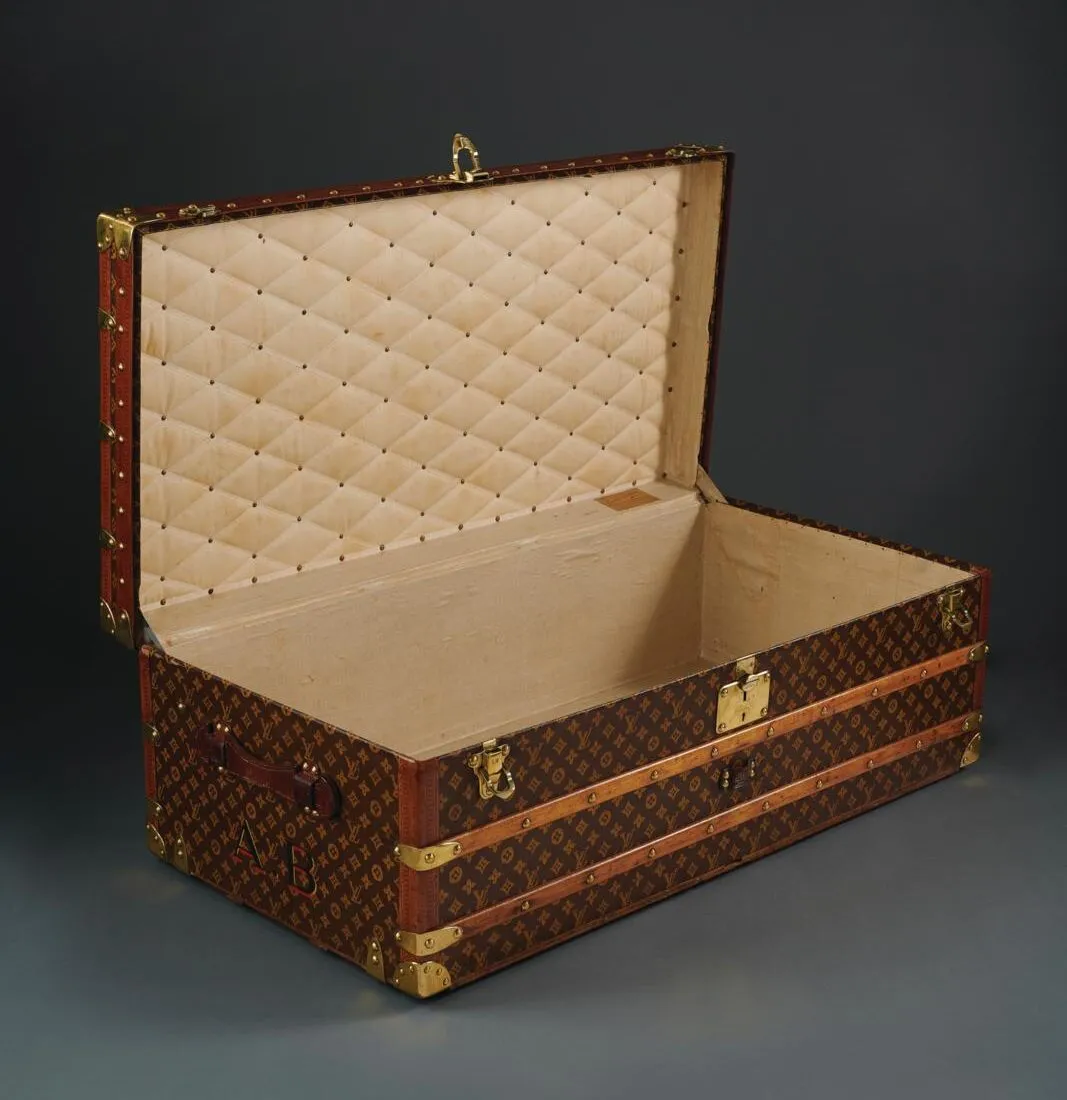
You might also like Charles Tiffany: everything you need to know about the jewellery icon
How to buy antique Louis Vuitton luggage
For statement luggage that’s effortlessly chic, you can’t beat an authentic Louis Vuitton trunk. But how do you ensure that the piece you’re buying is the real deal? One way is to look for the famous LV logo, which Vuitton’s son Georges patented in 1896. ‘He was very proud of their name, and he was one of the first company owners to really recognise and protect his brand,’ explains Tim Bent.
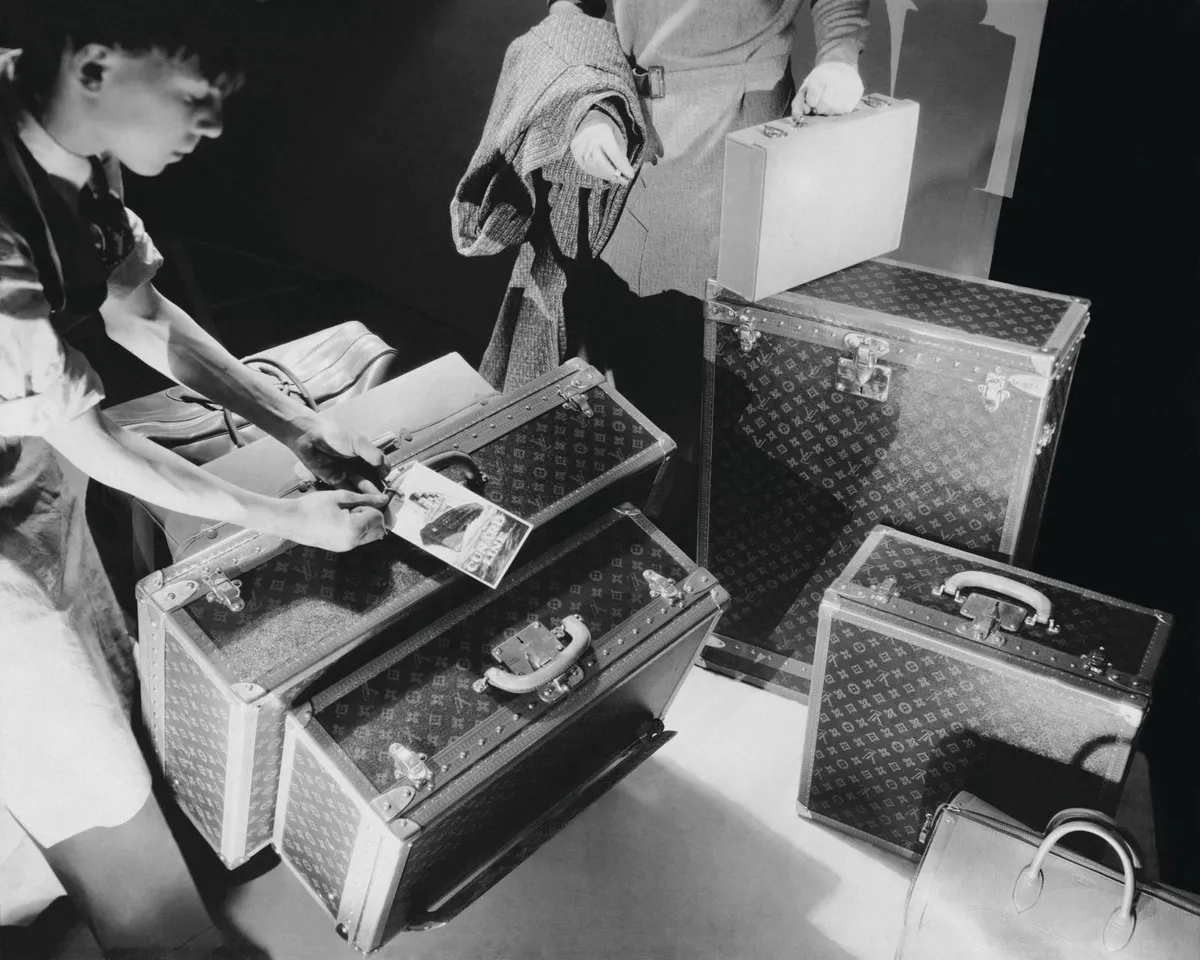
Check the detail
‘Although Vuitton handbags are some of the most faked, the trunks are generally not,’ Tim says. ‘The few that I have seen are terrible and blatantly not original!’ When shopping for an antique Vuitton trunk, look for all of the rivets and check that the lock is stamped with ‘Louis Vuitton’.
And, although there should be some natural wear and patina, the details and finish should still be of a high quality. ‘There will usually be a label inside the trunk, a number stamped onto the lock and another inside the trunk,’ says Tim. ‘These numbers were recorded by Vuitton for the client records so that a new key could be ordered if it was lost.’
How much to pay
‘Scarcity, condition and provenance can make a big difference to the value,’ explains Tim. ‘Vuitton made trunks for polo equipment, fishing rods and even bicycles. And Vuitton vanity cases, which were full of bottles and brushes, are rare to find in perfect condition, and command a high price.’
Expect to pay upwards of £10,000 for a Louis Vuitton trunk in good condition, and upwards of £2,000 for a suitcase. ‘I would always recommend buying from a specialist,’ adds Tim. ‘Look for a dealer that is a member of LAPADA or BADA, the two principal antique dealer associations. Dealers will have been carefully vetted and you will be covered by their substantial after-sale guarantees.’
